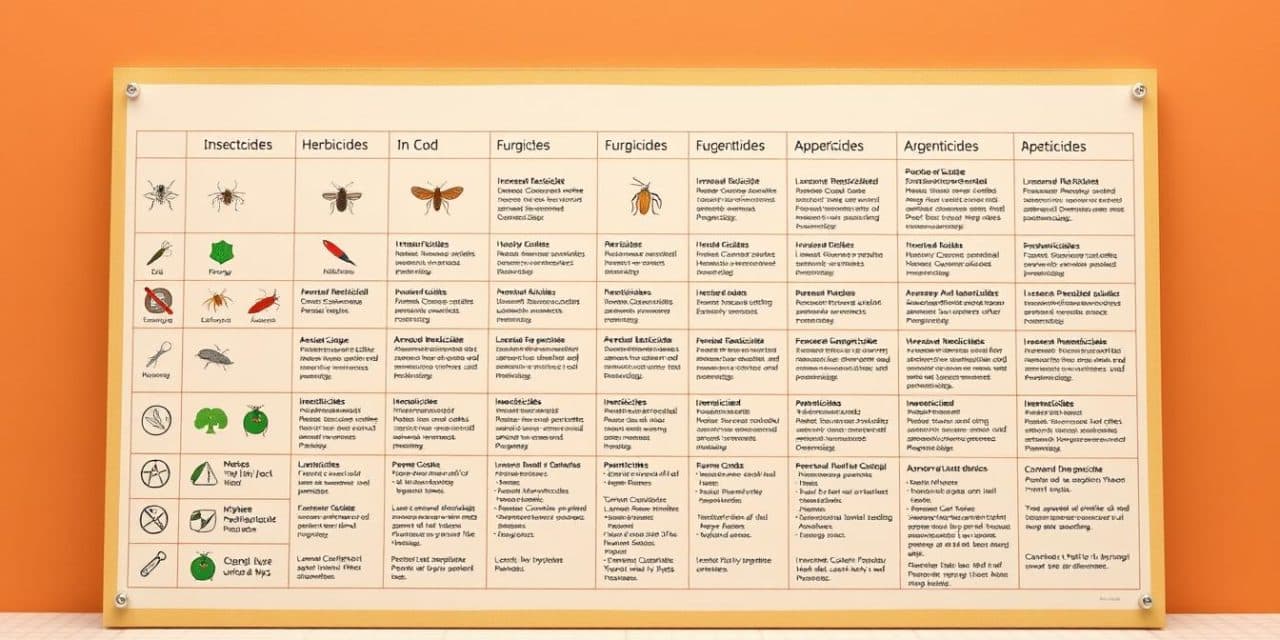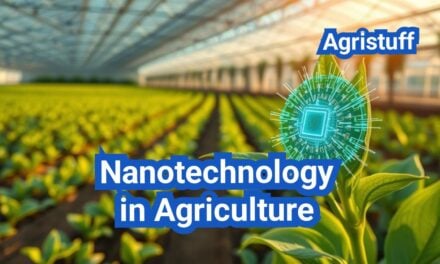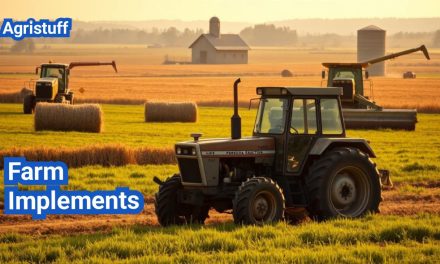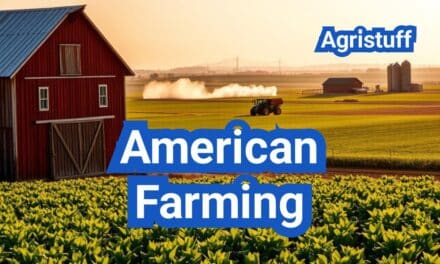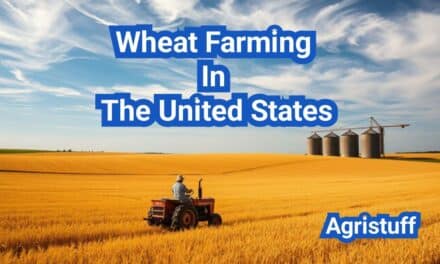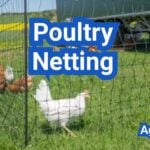Pesticides play a crucial role in modern agriculture, helping to protect crops from pests and diseases. According to the law, a pesticide is any substance intended for preventing, destroying, repelling, or mitigating any pest. The use of agricultural chemicals is vital for maintaining crop health and ensuring food security.
The classification of pesticides is based on their chemical composition, mode of action, and target pests. Understanding the different crop protection methods and pesticide use in farming is essential for effective pest management.
Key Takeaways
- Types of pesticides: Pesticides are substances used to control pests and diseases in crops.
- Agricultural chemicals are vital for maintaining crop health and food security.
- Pesticide classification is based on chemical composition and target pests.
- Understanding crop protection methods is crucial for effective pest management.
- Pesticide use in farming requires careful planning and execution.
Understanding Pesticides and Their Importance
Pesticides are substances used in agricultural practices to manage and control pests, including insects, weeds, and diseases that can damage crops. The use of pesticides is a critical component of modern farming, enabling farmers to protect their crops and maintain productivity.
What Are Pesticides?
Pesticides are chemical or biological substances designed to control pests. They can be classified into different types based on their target organisms, such as insecticides for insects, herbicides for weeds, and fungicides for fungal diseases. The development and application of pesticides have evolved significantly over the years, with a growing emphasis on safety and environmental sustainability.
The Role of Pesticides in Modern Agriculture
Pesticides play a vital role in modern agriculture by helping farmers control pests that can significantly reduce crop yields. Effective pest management is crucial for ensuring food security and meeting the demands of a growing global population. Pesticides contribute to this effort by providing a range of crop protection methods, from chemical controls to more targeted biological approaches.
Global Pesticide Usage Statistics
The global use of pesticides is substantial, with millions of tons applied annually across various agricultural sectors. According to recent statistics, the global pesticide market is valued at billions of dollars, with significant contributions from regions like North America, Europe, and Asia. The following table provides an overview of global pesticide usage by region:
| Region | Pesticide Usage (tons) | Market Share (%) |
|---|---|---|
| North America | 250,000 | 25 |
| Europe | 200,000 | 20 |
| Asia | 300,000 | 30 |
| South America | 150,000 | 15 |
| Africa | 100,000 | 10 |
This data highlights the significant role pesticides play in global agriculture, with varying levels of usage across different regions. Understanding these trends is essential for developing effective pest management strategies that balance agricultural productivity with environmental considerations.
The History and Evolution of Pesticide Use

The history of pesticide use is a story of continuous innovation, from ancient practices to modern chemical formulations. For centuries, farmers and agricultural practitioners have sought effective methods to control pests and protect their crops.
Early Pest Control Methods | Types of pesticides
Early pest control methods were often rudimentary and labor-intensive. Techniques included manual removal of pests, the use of natural substances like sulfur and plant extracts, and cultural practices such as crop rotation. These methods were sometimes effective but often limited in their application and efficacy.
The use of natural substances marked an early attempt at pest control. For instance, the ancient Greeks and Romans used various natural products to control pests. The use of sulfur, for example, dates back to ancient times, with its application in agriculture noted by the Greek historian Homer.
The Development of Modern Pesticides | Types of pesticides
The development of modern pesticides began in earnest in the late 19th and early 20th centuries with the discovery of synthetic chemicals. The introduction of DDT in the 1940s revolutionized pest control, offering a highly effective means of controlling a wide range of pests. This was followed by the development of other synthetic pesticides, including organophosphates and carbamates.
These modern pesticides have been instrumental in increasing crop yields and reducing losses due to pests. However, their use has also raised concerns about environmental impact, health risks, and the development of pesticide resistance.
Shifting Trends in Pesticide Application | Types of pesticides
In recent years, there has been a shift towards more targeted and sustainable pesticide use. This includes the development of precision agriculture techniques, which allow for more precise application of pesticides, reducing waste and environmental impact. Additionally, there is a growing interest in organic and natural pesticides, which are seen as more environmentally friendly alternatives to synthetic chemicals.
The trend towards sustainability also involves the integration of pest management practices, including biological controls and cultural practices, into comprehensive Integrated Pest Management (IPM) strategies. These approaches aim to minimize the use of chemical pesticides while maintaining effective pest control.
Major Types of Pesticides by Target Organism
Pesticides are broadly classified into several types based on the organisms they target, including insecticides, herbicides, fungicides, and rodenticides. This classification is crucial for understanding the diverse applications of pesticides in agriculture, public health, and environmental management.
Insecticides: Controlling Insect Populations | Types of pesticides
Insecticides are chemicals used to control or kill insects. They are vital in agriculture for protecting crops from insect damage. Examples include organophosphates and pyrethroids.
Herbicides: Managing Unwanted Plants | Types of pesticides
Herbicides are used to manage or eliminate unwanted plants or weeds. They are essential in agriculture for reducing competition for water and nutrients. Selective herbicides target specific weeds, while non-selective herbicides kill a broader range of plants.
Fungicides: Combating Fungal Diseases | Types of pesticides
Fungicides are pesticides that prevent or control fungal diseases in plants. They are critical in agriculture for maintaining crop health and preventing significant yield losses.
Rodenticides: Controlling Rodent Pests | Types of pesticides
Rodenticides are used to control rodent populations. They are often used in agricultural settings to protect crops and in public health to prevent the spread of diseases carried by rodents.
| Type of Pesticide | Target Organism | Examples | Primary Use |
|---|---|---|---|
| Insecticides | Insects | Organophosphates, Pyrethroids | Agriculture, Public Health |
| Herbicides | Weeds/Plants | Glyphosate, 2,4-D | Agriculture, Land Management |
| Fungicides | Fungi | Triazoles, Strobilurins | Agriculture, Crop Protection |
| Rodenticides | Rodents | Warfarin, Brodifacoum | Agriculture, Public Health |
Chemical Classification of Pesticides

Understanding the chemical classification of pesticides is essential for their safe and effective use in agriculture. Pesticides can be categorized into various chemical groups based on their composition and mode of action. This classification helps in understanding their properties, applications, and potential environmental impacts.
Organophosphates and Their Mechanisms | Types of pesticides
Organophosphates are a widely used class of chemical pesticides. They work by inhibiting the enzyme acetylcholinesterase, which is crucial for the proper functioning of the nervous system in insects. Examples include malathion and chlorpyrifos. While effective against a broad range of pests, organophosphates have raised health and environmental concerns due to their toxicity.
Carbamates: Properties and Applications | Types of pesticides
Carbamates are another significant group of chemical pesticides. They also inhibit acetylcholinesterase but are generally considered less toxic to humans than organophosphates. Carbaryl is a commonly used carbamate. These pesticides are used in various agricultural and domestic settings for controlling a wide range of pests.
Pyrethroids and Synthetic Derivatives | Types of pesticides
Pyrethroids are synthetic derivatives of natural insecticides found in chrysanthemum flowers. They are known for their rapid action against insects and relatively low toxicity to mammals. Permethrin is a well-known pyrethroid used in both agricultural and household applications. Pyrethroids have become popular due to their effectiveness and perceived safety.
Neonicotinoids: Uses and Concerns | Types of pesticides
Neonicotinoids are a class of chemical pesticides that have gained widespread use due to their effectiveness against a variety of pests. They act on the nicotinic acetylcholine receptors in insects, leading to their death. Imidacloprid is one of the most commonly used neonicotinoids. However, their use has been linked to concerns about bee health and environmental contamination.
As stated by the Environmental Protection Agency (EPA), “The use of pesticides must be balanced with the need to protect human health and the environment.” This balance is crucial in the development and application of chemical pesticides.
“The goal is to use pesticides in a way that minimizes risks to human health, non-target organisms, and the environment while maintaining effective pest control.”
— EPA Guidelines
The chemical classification of pesticides into groups like organophosphates, carbamates, pyrethroids, and neonicotinoids is vital for understanding their modes of action, uses, and potential risks. This knowledge is essential for developing strategies to mitigate their environmental impact while ensuring effective pest control.
Organic and Natural Pesticides
As concerns about environmental sustainability grow, organic and natural pesticides are gaining attention. These alternatives to synthetic pesticides are derived from natural sources, including plants, microbes, and minerals, offering a potentially safer and more environmentally friendly approach to pest control.
Plant-Derived Pesticides | Types of pesticides
Plant-derived pesticides, also known as botanical pesticides, are extracted from plants and have been used for centuries to control pests. Examples include pyrethrin from chrysanthemum flowers and neem oil from the seeds of the neem tree. These pesticides are biodegradable and generally have a lower toxicity to mammals and birds compared to synthetic pesticides.
Microbial Pesticides | Types of pesticides
Microbial pesticides contain microorganisms such as bacteria, fungi, or viruses that are used to control pests. Bacillus thuringiensis (Bt) is a widely used bacterium that produces proteins toxic to certain insect larvae. Microbial pesticides are target-specific, reducing the harm to non-target organisms and the environment.
Mineral-Based Solutions | Types of pesticides
Mineral-based pesticides are derived from minerals and include substances like diatomaceous earth and sulfur. These materials work through physical means, such as dehydrating insects or damaging their exoskeletons, and are generally considered safe for humans and wildlife.
Effectiveness Compared to Synthetic Options
The effectiveness of organic and natural pesticides can vary compared to synthetic options. While they may have a slower action or shorter residual activity, they offer significant benefits in terms of environmental safety and reduced health risks. Integrated pest management (IPM) strategies often combine organic and natural pesticides with other control methods to achieve optimal results.
Biological Pest Control Methods

Biological pest control involves utilizing natural enemies of pests to manage their populations. This approach has gained significant attention as a sustainable and environmentally friendly alternative to chemical pesticides.
Beneficial Insects and Predators | Types of pesticides
One of the most effective biological pest control methods is the use of beneficial insects and predators. Ladybugs, lacewings, and parasitic wasps are examples of natural predators that feed on pests, reducing the need for pesticides. For instance, ladybugs are known to consume aphids, a common garden pest.
Examples of Beneficial Insects:
- Ladybugs
- Lacewings
- Parasitic wasps
- Predatory mites
Microbial Biocontrol Agents | Types of pesticides
Microbial biocontrol agents, such as bacteria, fungi, and viruses, are another crucial component of biological pest control. These microorganisms can infect and kill pests, or compete with them for resources. Bacillus thuringiensis (Bt) is a well-known bacterium used to control various insect pests.
| Microbial Agent | Target Pest |
|---|---|
| Bacillus thuringiensis | Lepidopteran larvae |
| Trichoderma spp. | Fungal pathogens |
Pheromone Traps and Disruption Techniques | Types of pesticides
Pheromone traps and disruption techniques are used to control pest populations by interfering with their mating behaviors. Synthetic pheromones mimic the natural chemicals released by insects, attracting them to traps or disrupting their ability to locate mates.
“The use of pheromone traps has become a valuable tool in integrated pest management, allowing for the monitoring and control of pest populations in a targeted manner.”
Integration with Chemical Controls
Biological pest control methods can be integrated with chemical controls to create a comprehensive pest management strategy. This integrated approach can enhance the effectiveness of pest control while minimizing environmental impact.
Pesticide Formulations and Application Methods

The formulation and application of pesticides are critical factors in determining their efficacy and environmental impact. Pesticides are available in various formulations, each with its own set of advantages and application methods.
Liquid Formulations | Types of pesticides
Liquid formulations are one of the most common types of pesticides. They can be easily mixed with water or other solvents to create a solution that can be sprayed on crops or other areas by pesticide sprayer . Key benefits of liquid formulations include their flexibility in application and the ability to cover large areas efficiently.
- Easy to mix and apply
- Can be used with various application equipment
- Effective for both targeted and broad-spectrum applications
Dry Formulations | Types of pesticides
Dry formulations, such as granules or powders, offer an alternative to liquid pesticides. They are often used for specific types of pest control, such as soil treatment or baiting. Dry formulations can be advantageous in certain situations due to their ease of storage and transport.
- Granules are often used for soil application
- Powders can be used for foliar sprays or dusting
- Less risk of drift compared to liquid formulations
Application Equipment and Techniques | Types of pesticides
The effectiveness of pesticide application depends not only on the formulation but also on the equipment and techniques used. Various types of application equipment are available, including sprayers, dusters, and spreaders. Proper calibration and maintenance of equipment are crucial for efficient application.
Targeted vs. Broad-Spectrum Application | Types of pesticides
Pesticide application can be either targeted or broad-spectrum. Targeted application focuses on specific areas or pests, reducing the risk of environmental contamination and minimizing the impact on non-target organisms. In contrast, broad-spectrum application covers larger areas and can be more effective for widespread pest infestations.
- Targeted application reduces chemical usage
- Broad-spectrum application can be more effective for severe infestations
- Choice of application method depends on pest type and density
Selecting the Right Types of Pesticides for Different Scenarios

The selection of pesticides depends on several factors, including the type of crop, the pest involved, and environmental conditions. Making an informed decision is crucial for effective pest management and minimizing potential risks to human health and the environment.
Crop-Specific Considerations | Types of pesticides
Different crops have varying levels of susceptibility to pests and diseases. For instance, crops like corn and soybeans are often targeted by a range of pests, necessitating the use of specific insecticides. Crop rotation and the use of resistant varieties can also influence the choice of pesticide.
When selecting a pesticide for a particular crop, it’s essential to consider the crop’s growth stage, the pest’s life cycle, and the potential for pesticide residues. For example, during the flowering stage, it’s crucial to avoid using pesticides that are harmful to pollinators.
Pest Identification and Assessment | Types of pesticides
Accurate pest identification is the cornerstone of effective pest management. Misidentification can lead to the use of inappropriate pesticides, reducing their efficacy and potentially harming non-target organisms.
- Monitor fields regularly to detect pest infestations early.
- Use a combination of visual inspections and trapping methods.
- Identify the pest species and assess the level of infestation.
Environmental Factors | Types of pesticides
Environmental conditions such as weather, soil type, and water availability can significantly impact pesticide efficacy and persistence. For example, heavy rainfall can lead to the runoff of pesticides into water bodies, posing a risk to aquatic life.
- Consider the weather forecast before applying pesticides.
- Choose pesticides with suitable formulations for the prevailing environmental conditions.
- Follow label instructions to minimize environmental impact.
Resistance Management Strategies | Types of pesticides
The development of pesticide resistance is a significant concern in modern agriculture. To mitigate this risk, it’s essential to implement resistance management strategies, such as rotating pesticides with different modes of action and using integrated pest management (IPM) practices.
By adopting a holistic approach to pest management, farmers can reduce their reliance on a single pesticide, thereby slowing the development of resistance.
Environmental Impact of Different Pesticide Types

Understanding the environmental effects of various pesticide types is crucial for sustainable farming practices. Pesticides, while essential for controlling pests, can have far-reaching consequences on the environment, affecting not just the target pests but also non-target organisms and ecosystems.
Effects on Non-Target Organisms | Types of pesticides
One of the significant environmental impacts of pesticides is their effect on non-target organisms. These can include beneficial insects like bees and butterflies, as well as other wildlife. For instance, neonicotinoid insecticides have been linked to declines in bee populations, affecting pollination services.
Water and Soil Contamination | Types of pesticides
Pesticides can contaminate water bodies through runoff from agricultural fields, posing risks to aquatic life. Similarly, soil contamination can occur, affecting soil health and microbial communities. This contamination can have long-term effects on ecosystems, potentially entering the food chain.
Biodegradability and Persistence | Types of pesticides
The environmental persistence of pesticides varies widely. Some pesticides break down quickly, while others can persist in the environment for years, continuing to exert their effects on target and non-target organisms alike. Understanding the biodegradability of pesticides is crucial for assessing their environmental impact.
Ecological Risk Assessment | Types of pesticides
Ecological risk assessment involves evaluating the potential risks posed by pesticides to the environment. This includes assessing exposure pathways, toxicity to various organisms, and the potential for bioaccumulation. A comprehensive risk assessment helps in developing strategies to mitigate adverse environmental impacts.
| Types of pesticides | Environmental Impact | Mitigation Strategies |
|---|---|---|
| Insecticides | Effects on beneficial insects, water contamination | Integrated Pest Management (IPM), targeted application |
| Herbicides | Soil contamination, impact on non-target plants | Crop rotation, use of herbicide-resistant crops |
| Fungicides | Effects on soil microorganisms, water contamination | Use of resistant crop varieties, cultural controls |
By understanding the environmental impacts of different pesticide types, farmers and policymakers can make informed decisions to minimize harm to the environment while protecting crops. This involves a combination of strategies, including the use of more targeted pesticides, implementing IPM practices, and promoting sustainable agricultural practices.
Health and Safety Considerations

Health and safety considerations are crucial when dealing with pesticides due to their potential toxicity. Pesticides can pose significant risks to human health, ranging from acute effects like poisoning to chronic conditions such as cancer or neurological disorders.
Acute and Chronic Health Effects | Types of pesticides
Pesticide exposure can lead to both acute and chronic health effects. Acute effects occur shortly after exposure and can include symptoms like headaches, dizziness, and respiratory issues. Chronic effects, on the other hand, develop over a longer period and may result in conditions such as cancer, neurological damage, or reproductive issues.
Acute health effects are often immediate and can be life-threatening. For instance, organophosphate poisoning can cause severe symptoms, including muscle weakness, paralysis, and respiratory failure. Prompt medical attention is crucial in such cases.
Proper Handling and Application Safety | Types of pesticides
Proper handling and application of pesticides are critical to minimizing health risks. This includes reading and following label instructions, wearing appropriate protective gear, and ensuring that the application area is well-ventilated.
- Always wear protective clothing, including gloves, masks, and eye protection.
- Ensure the application area is clear of people and pets.
- Follow the recommended dosage and application method.
Protective Equipment Requirements | Types of pesticides
The use of protective equipment is vital when handling pesticides. This equipment can include gloves, masks, goggles, and coveralls, depending on the type of pesticide and the method of application.
Emergency Response to Pesticide Exposure | Types of pesticides
In the event of pesticide exposure, emergency response is crucial. This includes providing first aid, calling emergency services if necessary, and reporting the incident to the relevant authorities.
Key steps in emergency response include:
- Remove contaminated clothing and wash the affected area with soap and water.
- Provide first aid as necessary, such as administering antidotes or performing CPR.
- Seek immediate medical attention for severe exposure.
By understanding the health and safety considerations associated with pesticide use, individuals can take necessary precautions to protect themselves and others from potential harm.
Regulatory Framework for Pesticides in the United States

Understanding the regulatory framework for pesticides is crucial for farmers, policymakers, and consumers alike. The regulation of pesticides involves multiple layers, including federal and state agencies, to ensure safe and effective use.
EPA Registration and Approval Process | Types of pesticides
The Environmental Protection Agency (EPA) is responsible for registering and approving pesticides in the United States. The EPA registration process involves a thorough review of the pesticide’s chemical composition, intended use, and potential environmental and health impacts. This process ensures that pesticides are safe for use and effective in controlling pests.
The EPA evaluates several factors, including the pesticide’s toxicity, potential for environmental contamination, and efficacy. Only pesticides that meet the EPA’s stringent standards are granted registration and allowed for use in the U.S. market.
Restricted Use Classifications | Types of pesticides
Pesticides are classified as either “general use” or “restricted use” based on their potential risks. Restricted use pesticides are those that pose a higher risk to human health or the environment and can only be applied by certified professionals. This classification helps minimize the risks associated with pesticide use.
The restricted use classification is determined by the EPA based on factors such as the pesticide’s toxicity, potential for exposure, and environmental persistence. Users of restricted use pesticides must undergo training and certification to ensure they understand the risks and proper handling procedures.
State-Level Regulations | Types of pesticides
In addition to federal regulations, individual states may impose their own regulations on pesticide use. State-level regulations can be more stringent than federal requirements and may include specific restrictions on pesticide application, use, and disposal.
States may also have their own registration and licensing requirements for pesticide applicators. This patchwork of regulations requires users to be aware of both federal and state laws governing pesticide use.
International Regulatory Differences | Types of pesticides
Pesticide regulations vary significantly between countries, reflecting different environmental conditions, agricultural practices, and risk tolerance. International regulatory differences can impact the global trade of pesticides and agricultural products.
The United States, along with other countries, participates in international agreements and harmonization efforts to facilitate the global trade of pesticides while ensuring safety and environmental protection. Understanding these differences is crucial for companies involved in the international pesticide market.
Sustainable Approaches to Pesticide Use

Sustainable pesticide use is gaining traction as a vital strategy for balancing agricultural productivity with environmental stewardship. As concerns over environmental impact and public health continue to grow, the agricultural sector is under increasing pressure to adopt more sustainable practices.
Integrated Pest Management (IPM) | Types of pesticides
Integrated Pest Management (IPM) is a holistic approach that combines physical, cultural, biological, and chemical controls to manage pests. IPM strategies aim to minimize harm to people, the environment, and beneficial organisms.
- Monitoring pest populations to determine the need for control measures
- Using a combination of control methods to manage pest populations effectively
- Evaluating the effectiveness of IPM strategies and making adjustments as needed
Precision Agriculture Technologies | Types of pesticides
Precision agriculture technologies involve the use of advanced technologies such as GPS, drones, and satellite imaging to optimize crop yields and reduce waste. These technologies enable farmers to apply pesticides more accurately and efficiently.
- Targeted application of pesticides to specific areas of the field
- Real-time monitoring of crop health and pest activity
- Data-driven decision making for pesticide application
Crop Rotation and Cultural Controls | Types of pesticides
Crop rotation and cultural controls are essential components of sustainable pesticide use. By rotating crops and modifying cultural practices, farmers can reduce the risk of pest buildup and minimize the need for pesticides.
- Rotating crops to break pest cycles
- Modifying planting dates and densities to avoid pest peaks
- Using resistant crop varieties to reduce pesticide use
Reduced-Risk Pesticide Programs | Types of pesticides
Reduced-risk pesticide programs aim to promote the use of pesticides that have lower risks to human health and the environment. These programs encourage the development and use of more targeted and safer pesticides.
| Program Features | Benefits |
|---|---|
| Promotion of safer pesticides | Reduced risk to human health and the environment |
| Encouragement of integrated pest management practices | More effective and sustainable pest control |
Finally
The use of pesticides is crucial for crop protection, and understanding the different pesticide types is essential for effective pest management. As discussed, various pesticide categories, including insecticides, herbicides, fungicides, and rodenticides, play a vital role in maintaining crop health and yield.
Sustainable pesticide use is critical to minimize environmental impact while ensuring food security. By adopting integrated pest management (IPM) strategies and utilizing pest control products judiciously, farmers and agricultural practitioners can reduce their ecological footprint.
The future of pest control lies in balancing the need for effective pest management with sustainable practices. By choosing the right pesticide types and application methods, we can protect crops while preserving the environment for future generations.
FAQ
What are pesticides and why are they important in agriculture?
Pesticides are substances used to control pests, including insects, weeds, and diseases. They play a crucial role in modern agriculture by protecting crops and ensuring food security.
What are the different types of pesticides?
Pesticides can be categorized into various types, including insecticides, herbicides, fungicides, and rodenticides, based on the type of pest they target.
What is the difference between synthetic and organic pesticides?
Synthetic pesticides are man-made chemicals, while organic pesticides are derived from natural sources, such as plants, microorganisms, or minerals.
How are pesticides classified based on their chemical composition?
Pesticides can be classified into different chemical families, including organophosphates, carbamates, pyrethroids, and neonicotinoids, each with distinct properties and uses.
What are some examples of biological pest control methods?
Biological pest control methods include the use of beneficial insects, microbial agents, and pheromones to manage pest populations.
How can pesticides be applied effectively and safely?
Pesticides can be applied using various techniques, including liquid and dry formulations, and the choice of application method depends on the type of pesticide and the target pest.
What factors should be considered when selecting a pesticide for a specific agricultural scenario?
Factors such as crop type, pest identification, environmental conditions, and resistance management strategies should be considered when selecting a pesticide.
What are the potential environmental impacts of pesticide use?
Pesticide use can have various environmental impacts, including effects on non-target organisms, water and soil contamination, and ecological risk.
What health and safety considerations are associated with pesticide use?
Pesticide use can pose health risks, including acute and chronic health effects, and proper handling and application safety measures should be taken to minimize exposure.
How are pesticides regulated in the United States?
Pesticides are regulated by the Environmental Protection Agency (EPA) through a registration and approval process, and state-level regulations may also apply.
What are some sustainable approaches to pesticide use?
Sustainable approaches to pesticide use include integrated pest management (IPM), precision agriculture technologies, and reduced-risk pesticide programs.
What is integrated pest management (IPM) and how does it work?
IPM is a holistic approach to managing pests that combines physical, cultural, biological, and chemical controls to minimize pesticide use and mitigate environmental impacts.
How can pesticide resistance be managed?
Pesticide resistance can be managed through strategies such as rotating pesticides, using multiple modes of action, and implementing integrated pest management practices.
Conclusion of: Types of pesticides
Pesticides play a crucial role in modern agriculture by protecting crops from pests, diseases, and weeds. Understanding the types of pesticides is essential not only for farmers but also for consumers who care about food safety and environmental sustainability. In this article, we will explore the major categories of pesticides, their uses, and how they impact agriculture and the ecosystem.
What Are Pesticides?
Pesticides are chemical or biological substances designed to kill, repel, or control pests. These pests can include insects, weeds, fungi, rodents, bacteria, and other harmful organisms. The term “pesticide” encompasses a wide variety of specific types, each tailored to a particular type of pest.
Source: https://www.epa.gov/pesticides
Insecticides
Insecticides are a type of pesticide specifically formulated to control insect pests that damage crops. They are widely used in both conventional and organic farming. Insecticides can be classified based on their mode of action, such as contact, systemic, or ingestion-based.
Source: https://www.cdc.gov/niosh/topics/pesticides/
Herbicides
Herbicides are used to manage unwanted vegetation or weeds that compete with crops for nutrients, light, and space. There are selective herbicides that target specific weed types and non-selective ones that kill all vegetation. Herbicide use is vital for increasing crop yield and reducing labor.
Source: https://www.ers.usda.gov/agriculture/herbicides/
Fungicides
Fungicides help protect plants from fungal infections such as mildew, rusts, and molds. These pesticides are essential in areas with high humidity where fungal diseases can thrive. They are applied preventively or curatively to ensure crop quality and productivity.
Source: https://www.apsnet.org/edcenter/disimpactmngmnt/topc/Pages/Fungicides.aspx
Rodenticides
Rodenticides are formulated to kill rodents like rats and mice, which can cause significant damage to crops in storage and during growth. These pesticides are used with caution due to the risk of harming non-target animals and humans.
Source: https://www.cdc.gov/nceh/ehs/Docs/Pesticide_Safety_for_Consumers.pdf
Bactericides
Bactericides are pesticides used to control bacterial diseases in plants. Though less common than other types of pesticides, they play a vital role in managing bacterial infections in crops such as tomatoes, citrus, and apples.
Source: https://extension.psu.edu/bactericides-and-their-use-in-plant-disease-management
Nematicides
Nematicides are used to manage nematodes—microscopic worms that attack plant roots and reduce nutrient uptake. These pesticides are particularly important in root crop farming such as potatoes, carrots, and beets.
Source: https://ipm.ucanr.edu/PMG/PESTNOTES/pn7489.html
Molluscicides
Molluscicides target mollusks like slugs and snails that damage crops by feeding on foliage. These are particularly useful in wet climates and are often applied around leafy vegetables and ornamental plants.
Source: https://hort.extension.wisc.edu/articles/slugs/
Acaricides
Acaricides are pesticides used to control mites and ticks that affect both plants and animals. These pests can reduce crop yields and transmit diseases. Acaricides are crucial in the production of fruits, vegetables, and ornamental crops.
Source: https://www.aphis.usda.gov/aphis/resources/pests-diseases
Biological Pesticides
Biopesticides are derived from natural materials such as animals, plants, bacteria, and certain minerals. They tend to be less toxic and more environmentally friendly than synthetic chemicals, making them increasingly popular in organic agriculture.
Source: https://www.epa.gov/ingredients-used-pesticide-products/what-are-biopesticides
Systemic vs. Contact Pesticides
Pesticides can also be classified based on how they act. Systemic pesticides are absorbed by the plant and provide internal protection, while contact pesticides remain on the surface and kill pests upon contact. Understanding this classification helps in choosing the right pesticide for specific agricultural needs.
Source: https://www.agriculture.com/crops/technology/types-of-pesticides
Organic vs. Synthetic Pesticides
Organic pesticides are approved for use in organic farming and are derived from natural sources. Synthetic pesticides, on the other hand, are chemically manufactured. While both can be effective, organic pesticides generally have fewer negative environmental impacts.
Source: https://www.ams.usda.gov/about-ams/programs-offices/national-organic-program
Environmental Impact of Pesticides
The use of pesticides has raised concerns about their long-term effects on the environment, such as water contamination, soil degradation, and harm to non-target species like pollinators. Integrated Pest Management (IPM) is one approach that combines different methods to reduce pesticide use and environmental harm.
Source: https://www.fao.org/in-action/integrated-pest-management
Pesticide Regulation and Safety
In the United States, the Environmental Protection Agency (EPA) regulates pesticide use to ensure safety for humans, animals, and the environment. All pesticides must be registered and labeled with instructions for proper use. Farmers and applicators are also required to follow safety guidelines.
Source: https://www.epa.gov/pesticide-registration
Final Thought | Types of pesticides
Understanding the different types of pesticides and their roles in agriculture is crucial for making informed decisions about pest control. While pesticides remain a powerful tool for protecting crops, it’s essential to use them responsibly to minimize their impact on health and the environment. With advances in technology and growing interest in sustainable practices, the future of pesticide use is likely to become more targeted and eco-friendly.

